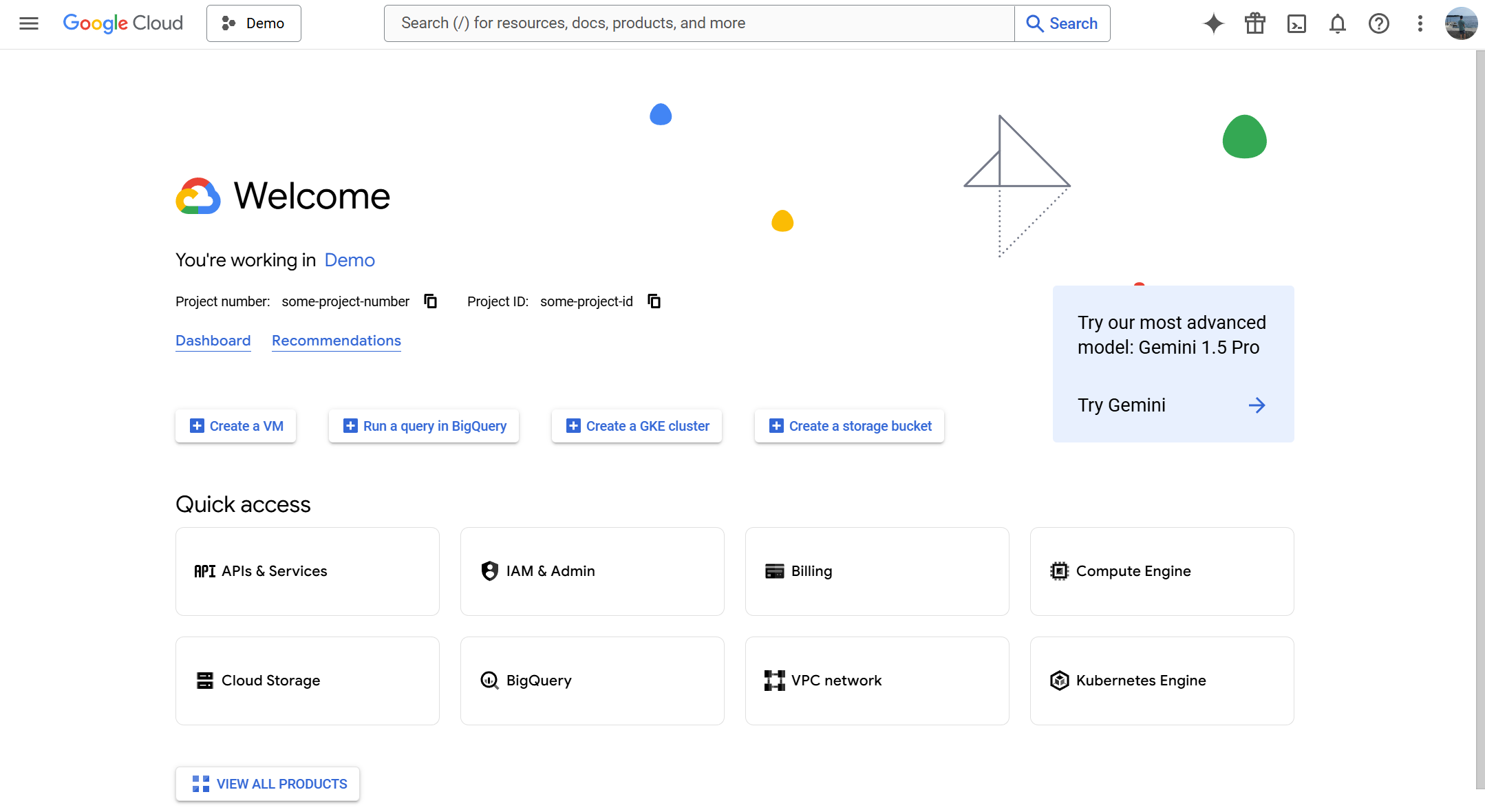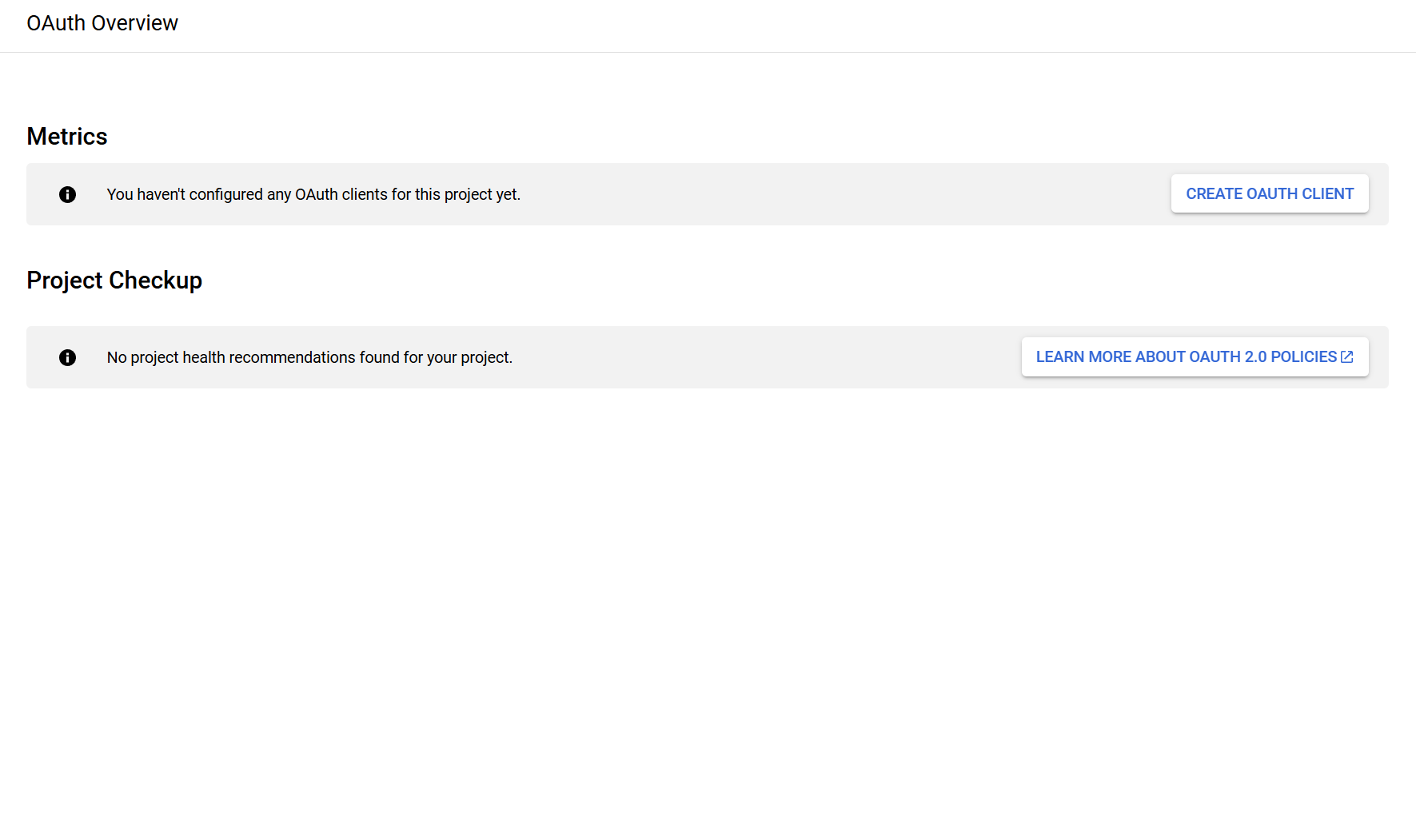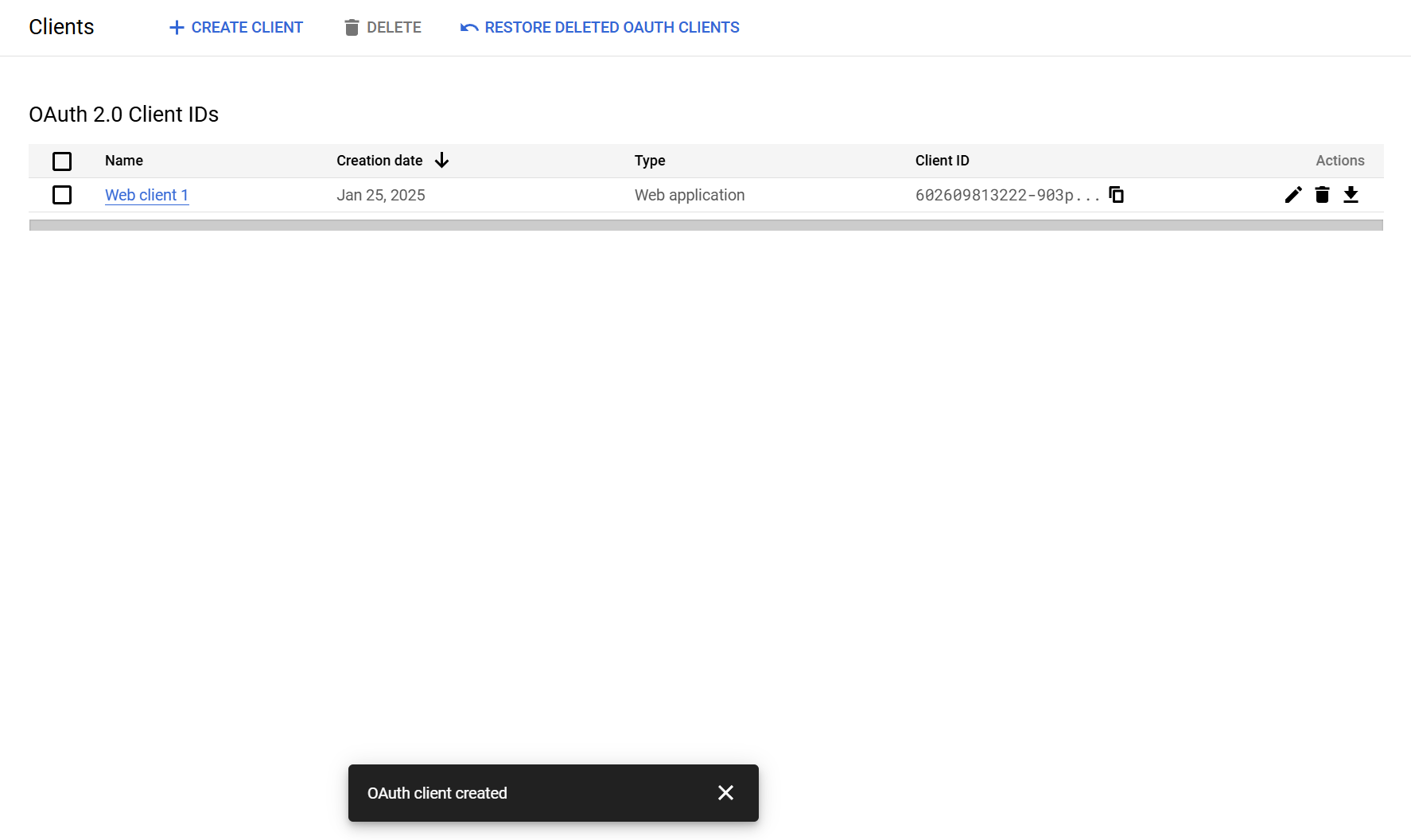Google OAuth
Use Google's OAuth screen to authenticate to Tinyauth.
Tinyauth has built-in support for Google OAuth, making it straightforward to set up.
Requirements
- A domain name (gTLDs required)
- A Google account
Creating the Google OAuth App
To begin, create an app in the Google Cloud Console. Create a new project (a default project may already exist). After creating the project, the following screen should appear:

From the quick access menu, click APIs & Services, then select OAuth consent screen from the sidebar. Click the Get Started button in the middle of the screen.
Google has updated the OAuth section. This guide uses the new OAuth experience. If a button appears saying "Try the new OAuth experience," click it to match the steps in this guide.
After clicking the button, the following screen should appear:

- App Name: Use
Tinyauth. - Support Email: Select the available email address.
- Audience: Choose External.
- Contact Information: Enter an email address.
- Agree to the data use policy and click Create.
After some time, the OAuth homepage will appear:

Click Create OAuth Client.
If a warning appears about the OAuth Consent Screen not being configured, refresh the page a few times to proceed.
- Application Type: Select Web Application.
- Name: Optionally rename the client (default is
Web Client 1). - Authorized Redirect URIs: Add the domain with the
/api/oauth/callback/googlesuffix, e.g.,https://tinyauth.example.com/api/oauth/callback/google.
Click Create. Once the application is created, the following screen will appear:

Click the client (e.g., Web Client 1) and copy the Client ID and Client Secret from the Additional Information section.
Configuring Tinyauth
Add the following environment variables to the Tinyauth Docker container:
services:
tinyauth:
environment:
- PROVIDERS_GOOGLE_CLIENT_ID=your-google-client-id
- PROVIDERS_GOOGLE_CLIENT_SECRET=your-google-secretOAuth alone does not guarantee security. By default, any GitHub account can
log in as a normal user. To restrict access, use the OAUTH_WHITELIST
environment variable to allow specific email addresses. Refer to the
configuration page for details.
With OAuth enabled, the USERS or USERS_FILE environment variables can be
removed to allow login exclusively through the OAuth provider.
Restart Tinyauth. Upon visiting the login screen, an additional option to log in with Google will appear.